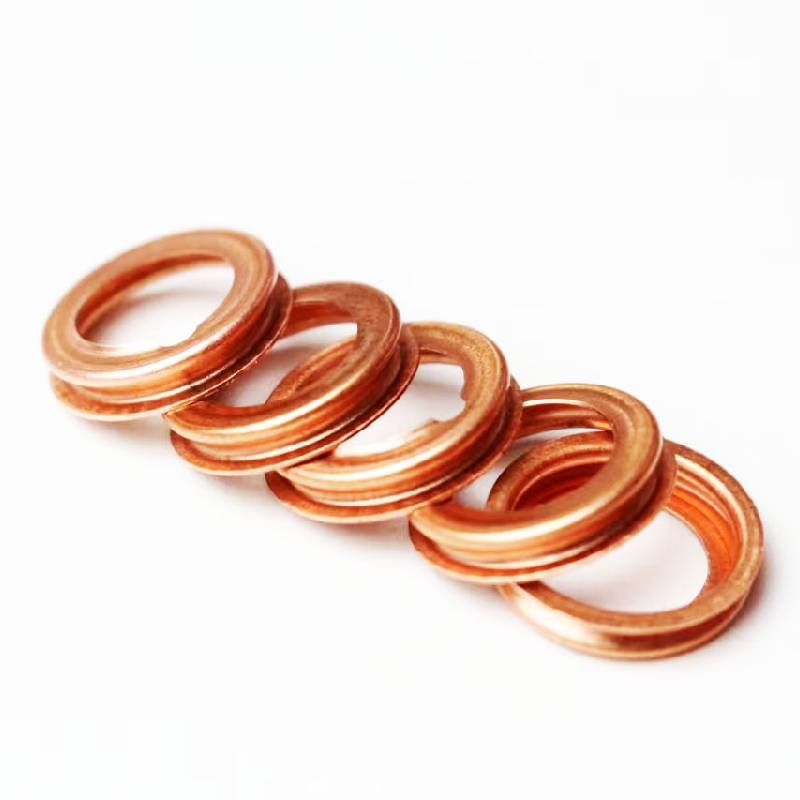O-Ring Oil Seals - High Performance Sealing Solutions
Understanding O-Ring Oil Seals Essential Components for Fluid Management
O-ring oil seals play a crucial role in various mechanical systems, ensuring the effective sealing of fluids and preventing contamination. These components, often overlooked, are integral to the functionality and longevity of machinery across numerous applications, from automotive engines to industrial equipment.
What is an O-Ring Oil Seal?
An O-ring oil seal is a circular ring made from elastomeric materials, designed to fit into a groove and compress against a shaft or housing to create a tight seal. The primary function of the O-ring is to prevent the leakage of fluids, such as oil, grease, or hydraulic fluids, while also blocking the ingress of dirt and contaminants. This sealing mechanism is essential in ensuring that machines operate efficiently and reliably.
Materials and Design
O-rings can be manufactured from various materials, including rubber, silicone, fluorocarbon, and polyurethane, depending on the specific application and environmental conditions. For instance, nitrile rubber is widely used in applications requiring resistance to petroleum-based oils, while fluorocarbon elastomers are preferred for high-temperature and chemical resistance situations.
The design of O-ring oil seals is relatively simple, yet effective. The circular shape allows for uniform compression when installed, creating a dynamic seal that can withstand pressure and movement. The size and thickness of the O-ring must be accurately chosen to match the application requirements; otherwise, it may lead to failure, resulting in costly leaks and downtime.
Applications in Industry
o ring oil seal

O-ring oil seals are ubiquitous in numerous industries, including automotive, aerospace, manufacturing, and oil and gas. In automotive applications, they are found in engines, transmissions, and pumps, where they seal oil passages and prevent leaks that could lead to engine failure. In hydraulic systems, O-rings maintain pressure and ensure the safe operation of machinery by preventing fluid loss.
In the aerospace sector, O-ring seals are critical for ensuring the integrity of fuel systems and hydraulic actuators. Their ability to withstand extreme temperatures and pressures makes them ideal for high-stakes applications where reliability is paramount.
Benefits of O-Ring Oil Seals
The advantages of using O-ring oil seals are numerous. They are cost-effective, easy to install, and highly versatile, making them suitable for a wide range of applications. Their design allows for flexibility in varying operational conditions, and they can accommodate different shaft diameters and sealing surfaces.
Furthermore, O-rings contribute to energy efficiency by preventing leaks, which can lead to reduced fluid consumption and lower operational costs. Properly functioning O-ring seals also extend the lifespan of equipment, minimizing the need for repairs and maintenance.
Conclusion
In conclusion, O-ring oil seals are fundamental components that ensure the efficient operation of machinery across various industries. Their simple yet effective design, coupled with a wide range of materials, makes them indispensable for fluid management. Understanding the significance of O-ring oil seals can help engineers and manufacturers optimize their systems for better performance and reliability. As industries continue to evolve, the importance of high-quality sealing solutions will only grow, highlighting the crucial role that O-rings play in modern engineering applications.
-
Understanding the Front Main Engine Seal: Purpose, Maintenance, and Installation
News Jul.29,2025
-
Understanding O-Rings and Seal Rings: Types, Applications, and Custom Solutions
News Jul.29,2025
-
Understanding Crankshaft Oil Seals: Rear Seals, Pulley Seals, and Their Role in Engine Integrity
News Jul.29,2025
-
The Importance of Front and Rear Crankshaft Seals in Engine Performance and Oil Management
News Jul.29,2025
-
Crank Oil Seals: Functions, Types, and Cost Considerations in Engine Maintenance
News Jul.29,2025
-
A Comprehensive Guide to O-Rings and Seals: Types, Materials, and Global Applications
News Jul.29,2025
-
Mastering Diesel and Performance Engine Maintenance: A Guide to Critical Oil Gaskets
News Jul.28,2025
Products categories















